Nokia Lumia 630 vs Motorola Moto G
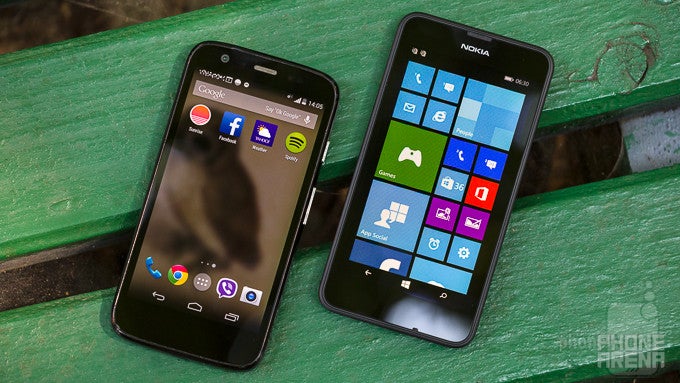
Introduction
The Nokia Lumia 630 is the new kid on the affordable phone market: a Windows Phone 8.1 device of very low price yet with a healthy screen size of 4.5 inches, the processor power of the quad-core Snapdragon 400, and nice enough design. With all this, there is simply no way not to compare it to its affordable Android sibling - the Motorola Moto G. Just like the Lumia 630, the Moto G showcases the best of Google’s operating system at a very affordable price - it’s got a 4.5” 720p display, larger than most devices its class, a powerful quad-core Snapdragon 400 processor, and a decent 5-megapixel camera.
Design
The Lumia 630 comes with a typical for Nokia form, boasting а wrap-around plastic shell that is easy to replace and swap for another one of different color. The material used in the 630 is plastic, with a paper-feeling soft touch finish that does not stain easily, and overall the phone is well put together.
The Moto G, on the other hand, is also a plastic phone, but unlike the flat lines of the Lumia, it has a preference for curves, and it uses a plastic shell that is a magnet for fingerprints. Notable on the Moto G is also the dimple on the back with the ‘M’ for Motorola, a nice cosmetic touch that gives the phone character.
Both use on-screen buttons - a novelty for Windows Phone where the Lumia 630 is the first phone to ever use such navigation, while in the Android world, on-screen buttons are pretty much a standard. The Lumia 630 and Moto G both have all their physical keys on the right - lock key in the middle and a volume rocker above for the Lumia, and the same in reverse position for the Moto G. The feel of the plastic keys on the Nokia phone is a bit shallow, though, and while they get the job done, the meticulously crafted buttons of the Moto G are much more responsive and solid.
Display
One of the biggest disadvantages for the Nokia Lumia 630 is the fact that its 4.5-inch display has a lowly resolution of just 480 x 854 pixels. This translates into a pixel density of just 218ppi, and makes everything on the screen a bit pixelized, an issue particularly noticeable when you read text in small fonts. The Moto G 4.5” display, on the other hand, is much sharper, with a resolution of 720 x 1280 pixels, granting it pixel density of the respectable 329ppi.
Turning over to the actual color fidelity, the Nokia Lumia 630 does fairly well for the class, with the white point at 7049K, pretty close to the reference 6500K value, which means that whites on the display appear just very slightly on the cold side. Colors are mostly within the industry-standard sRGB color gamut, but there is also a very noticeable oversaturation and some colors (most notably green) are way off. The Moto G has a little colder white point, but in terms of saturations it is even better, with rich colors within the sRGB gamut that are just slightly overblown, but overall this is one of the most accurate screens for this affordable class of devices.
Interface and Functionality
The Lumia 630 and Moto G feature two vastly different platforms. The Lumia 630 runs on the latest version of Microsoft’s operating system for mobile, Windows Phone 8.1, while the Moto G sport the newest iteration of Google’s Android, 4.4 KitKat.
There is a huge difference in interface and looks of the two: the Lumia 630 runs on the Live Tile-based interface of WP 8.1. The newest version of Microsoft’s operating system brings more customization options, and you can now have a wallpaper for your home screen, for instance, not just for the lockscreen. The biggest improvement, however, seems to be the addition of an Action Center, a drag-down area where all your notifications are accumulated, much like in Android.
The Android KitKat-based Moto G, on the other hand, has got Google’s vast ecosystem and the maturity of the platform on its side. You can customize Android with launchers and change almost every aspect of its appearance, while in terms of interface it uses the well-known, traditional icon approach.
In terms of apps, Microsoft bundles in a bunch of stuff with the Lumia 630 - Travel, Sports, Finance, Food & Drinks and News apps are here, while Nokia adds its two cents with a rich Weather app. You also have a rich phonebook, and a great keyboard experience as the virtual keyboard is snappy, with well-spaced keys and reassuring clicky sounds when you type. The Lumia 630 has not only the stock apps, but also some Nokia exclusives like Nokia Camera, Creative Studio and Storyteller.
Yet still, Microsoft’s ecosystem lacks some third party apps, and it does not stand on equal footing with the much richer Google Play Store of Android. The Moto G with its latest software on board, can run virtually all of Android’s apps, and that gives it a definite edge. Basic functionality is also well covered with stock Google apps like the dialer and the Google keyboard that is comfortable to type on.
We should note that both the Nokia Lumia 630 and the Moto G come in a single and dual SIM versions, with the option for dual SIM handsets mostly aimed at users in developing markets.
Processor and Memory
The Snapdragon 400 system chip has set foot on the affordable phone market firmly, and both the Lumia 630 and Moto G are running on Qualcomm’s quad-core chip, clocked at up to 1.2GHz.
With 1GB of RAM on board, though, the Moto G is better equipped for multitasking, while the Nokia handset ships with just 512MB of RAM.
For gaming, both phones are a good fit with the Adreno 305 GPU on both. The Lumia 630 has one big limitation, though - the 512MB of RAM are not enough for some games in the Windows Phone Marketplace to run, and you won’t be able to even download such titles, which is a shame. The Moto G suffers from no such issues, and is capable of running even more demanding games but frame rates might be lower for graphically intense games.
Internet and Connectivity
The Lumia 630 uses Microsoft’s Internet Explorer for web surfing, and Microsoft’s mobile browser is a fairly good solution as it opens web pages quickly and has a conveniently located address bar at the bottom, so you don’t have to reach all the way up to type a page name. The Moto G, on the other hand, ships with Google’s Chrome browser - a modern-looking browser with a card-based interface that feels a bit better optimized for touch and boasting cross-device syncing capabilities. It’s also plenty fast.
In terms of connectivity, both the Lumia 630 and Moto G support 4G HSPA (there is also a Moto G LTE model available). With HSPA speeds of up to 21Mbps on the downlink, the two devices are speedy. Other connectivity options include Wi-Fi, GPS, and Bluetooth 4.0, but there is no NFC on either one.
Camera
In terms of technical details, both shooters use a small, 1/4" 5-megapixel CMOS sensor. And while size and pixel counts are the same, the two use different optics - the Lumia 630 features a wider, 28mm f/2.4 lens, while the Moto G relies on a 37mm f/2.4 lens.
In terms of camera apps, you have two built-in options on the Lumia 630 - the stock Windows Phone camera app which gets the job done nicely, but lacks many advanced manual controls, and the Nokia Camera that brings a simple interface, but also adds that level of manual control that enthusiasts will want. We prefer the latter one as well, as it is extremely easy to control things like ISO, exposure, and even focus with it.
What about image quality, though? The Nokia Lumia 630 captures usable 5-megapixel images, but usable does not mean great. We noticed that many of the images turn out to have smudged detail and appear almost like an oil painting. A fun, but definitely unnatural look, and that’s our main complaint. Otherwise, though, colors are punchy and if you don’t stumble upon textures like leaves and grass that are worst affected by the oil-painting issue, the pictures are fairly good. The Moto G, in contrast, has soft detail, but the images lack that oil-painting effect and have a more natural ‘photograph’ look.
While the Lumia 630 lacks a front cam, the Moto G has a 1.3-megapixel shooter on the front, a nice thing to have for the occasional selfie or video chat.
In terms of video recording via the main camera, both handsets record footage at 720p resolution and 30 frames per second. Colors look a bit better, richer on the Nokia handset, and on the Moto G we have the same issues with softness as we saw in photos. The video recordings on both are usable, though, and look smooth.
Multimedia
With large for their class, 4.5-inch displays, the Lumia 630 and the Moto G are two great devices for media consumption - be it for browsing images, watching YouTube videos or just clips that you have on your device.
The sharper display of the Moto G gives it the edge here as everything on that display looks crisper. The Lumia 630 might not have that level of detail, but is also perfectly decent, and both manage to run all common formats at 720p without a problem.
For music, the Lumia 630 has got both the stock Windows Phone music player, as well as Nokia’s MixRadio app that comes with a music streaming service, while the Moto G features the Google Play Music app, on its part. Both handsets do a good job of categorizing your music and breaking it down in a neatly arranged collection, but when it comes to playback, the Moto G is the louder and clearer one.
Call Quality
Call quality is above average for both devices. The Nokia Lumia 630, in particular, distorts voices in the earpiece and lacks clarity. Its microphone, however, is better and voices are much better heard on the other end of the line. The Moto G has no stark issues, but voices in the earpiece do sound a bit on the hollow side. For all else, sound on both ends of the line is loud and clear.
Battery
The Nokia Lumia 630 sports an 1830mAh battery, while the Moto G has a larger, 2070mAh cell.
The actual battery life is good on both. The Lumia 630 lasts almost a full day off the charger and the Moto G is just about the same. If you use the two devices more scarcely, you’d find them carrying you through even 2 days on a single charge.
While both can have their backs easily removed and replaced, the Moto G battery remains sealed and cannot be swapped by the user easily, the Lumia 630 grants users the freedom to easily swap juicers on the go.
Conclusion
All in all, with the Nokia Lumia 630 and Motorola Moto G, we’re looking at some of the best affordable handsets out there - both offer larger than its peers screen sizes, snappy performance with a quad-core chip inside on both, and decent cameras.
The Lumia 630 comes with a very lucrative price tag of just $100 when you buy it locked to AT&T GoPhone, and if that’s an option for you, the 630 offers tremendous value for its money. If you are buying unlocked or in Europe, the Lumia 630 will cost you around $160 (130 euro). The Moto G, on the other hand, is now selling for around $150 (150 euro) for the 8GB model, which makes it also a great value for the money.

Follow us on Google News

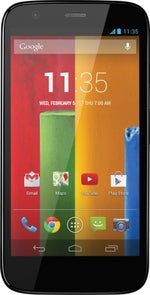



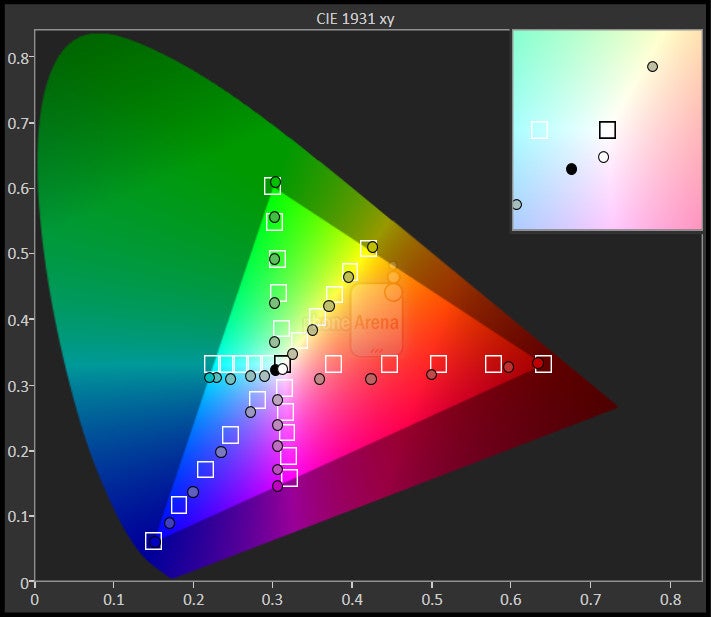






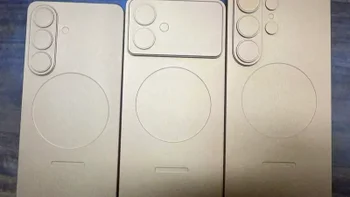

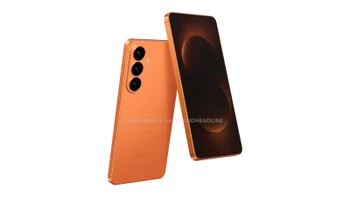





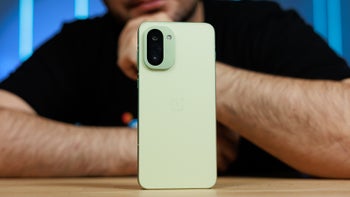
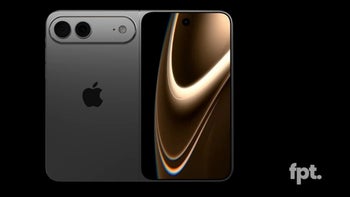
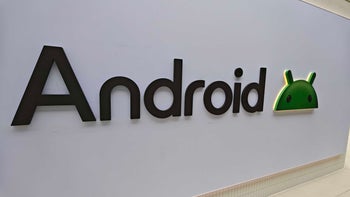


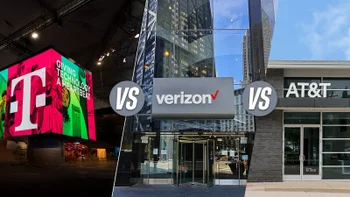
Things that are NOT allowed:
To help keep our community safe and free from spam, we apply temporary limits to newly created accounts: